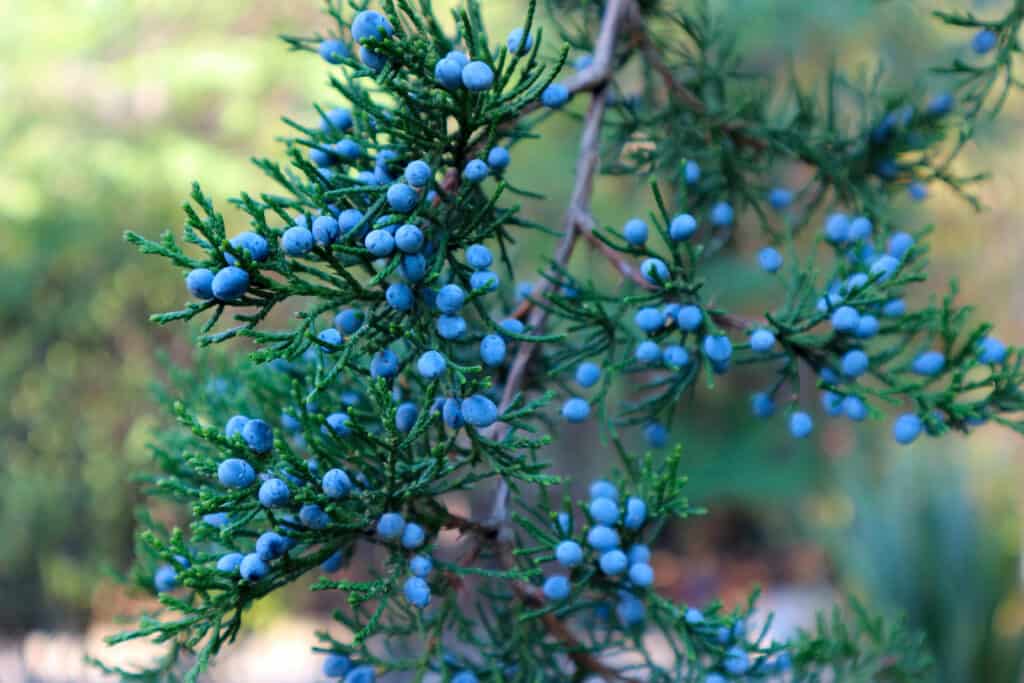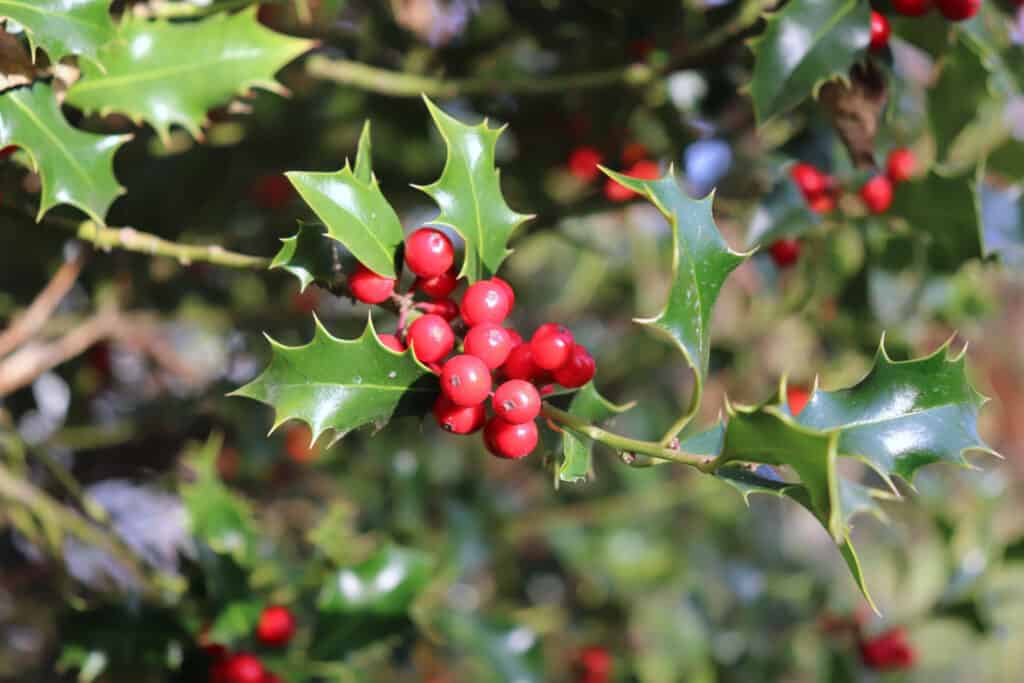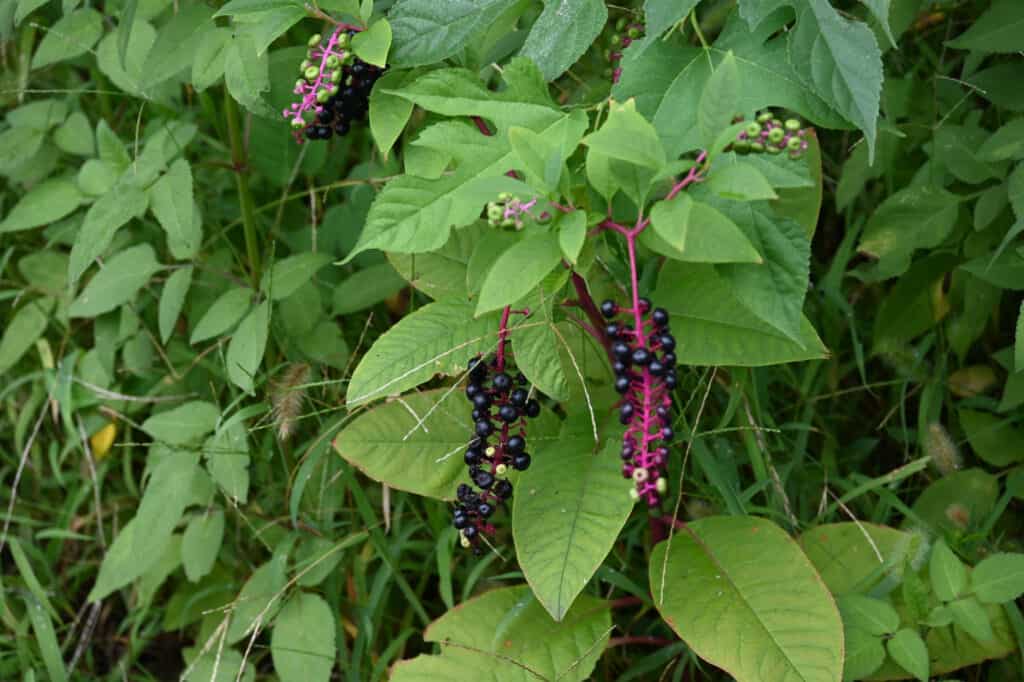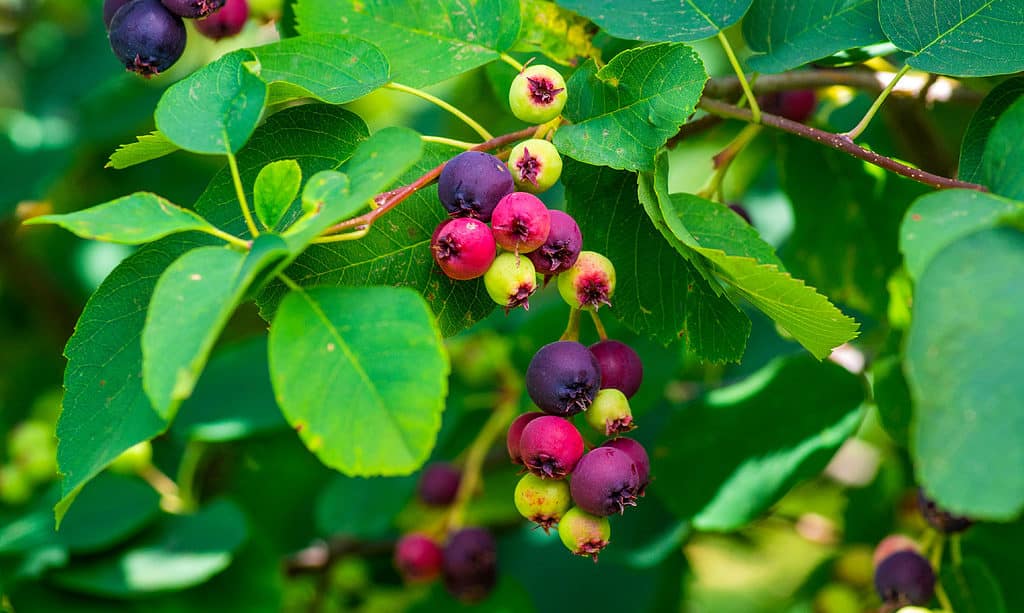Given the fact that they symbolize happiness, you may want to know how to bring more bluebirds into your life. There are certain plants that attract bluebirds more than others, especially when we consider the dietary requirements and habits of the Sialia genus. But which ones have the potential to bring flocks of bluebirds to your yard?
Wherever you may live and regardless of how much landscaping space you have, there are many plants you can add to your home and garden to attract these beautiful birds. Keep in mind that you should never plant invasive species in your yard, even if they do in fact attract bluebirds or other songbirds to your home. The invasiveness of certain plants is never worth the risk.
With all of this in mind, here are seven potential options to consider and why they might be ideal plants that attract bluebirds to your yard!
Elderberry

Bluebirds love elderberries (and humans can eat them too when properly prepared!).
©iStock.com/MelodyanneM
Commonly called elder, elderberry plants are ideal for anyone hoping to bring more bluebirds into their yard. These shrubs are comfortably grown in Hardiness Zones 3-9 with some varieties capable of tackling other Zones with ease.
Elderberries are perfect for bluebirds because of their ability to both feed and house this species. The shrublike growth habit of elder plants allows bluebirds the opportunity to hide from predators. And humans can also enjoy elderberries when they are cooked down properly- though your local bluebird population may beat you to the punch!
Flowering Dogwood

Dogwood produces berries that bluebirds consume readily.
©iStock.com/JillLang
Not only is flowering dogwood ideal for attracting bluebirds- it’s a beautiful tree to consider for any landscaping project. Any tree or shrub found within the Cornus genus is native to the United States and safe to plant without worrying about invasive connotations. Plus, all of the plants found in this genus produce delicious berries that bluebirds love to eat!
The most popular dogwood tree (classified as Cornus florida and pictured above) grows best in Zones 5-9. With a modest growth size of up to 30 feet, these trees are ideal for large and small yards alike.
Eastern Red Cedar

It makes sense that bluebirds are attracted to the blue berries of eastern red cedar trees.
©iStock.com/Lyudmila Chetvertnykh
You’ve likely seen some type of eastern red cedar around, even if you don’t live on the East Coast. This tree is adaptable enough to grow just about anywhere, especially if you find a specific cultivar that thrives in your local region. Not only are these trees large and stately- they also produce bluish berries that go perfectly with bluebirds!
Eastern red cedars grow very slowly but they can reach heights of nearly 70 feet tall. They are often considered invaluable trees for local wildlife populations given their size, longevity, and offerings of both food and shelter for birds and other species.
Holly

Holly trees and shrubs will attract bluebirds (and most other birds) to your yard.
©iStock.com/Hana Richterova
There are many different types of holly trees and shrubs, all of which contain the potential for attracting bluebirds. Any holly cultivar with bright red or orangeish berries is more likely to make birds curious. Thankfully, these colors are commonly found in holly species, including the American holly and the winterberry.
It’s important to note that most holly plants are considered dioecious, a word which means you will need to plant both male and female plants in order to get berries. While this may mean you end up with multiple holly trees in your yard, the bluebirds in your neighborhood will thank you for it!
Pokeweed

You can typically identify pokeweed by its pink stems.
©tamu1500/Shutterstock.com
If you live in the eastern United States, plan on planting or maintaining your existing pokeweed plant for bluebirds. However, anyone residing in California shouldn’t consider pokeweed a viable option. It is an extremely invasive plant and needs to be tended to carefully. Because of its potential for displacing existing, native plants, it is illegal to grow pokeweed in the state of California.
If you’re aware of pokeweed growing on your property, maintaining it for your songbird population isn’t a bad idea. But keep in mind that maintenance will be necessary. This fast-growing plant can get prolific quickly, even with bluebirds munching on its berries daily!
Hawthorn

All birds love hawthorn plants, especially bluebirds.
©iStock.com/mille19
Hawthorns belong to the Crataegus genus and come in many different cultivars. Given that there are so very many hawthorn options for you to consider, it’s ideal to plant a hawthorn tree or shrub that’s native to your local area. Regardless of what cultivar or species you choose, nearly all hawthorn plants produce the berries bluebirds crave.
Another benefit of hawthorn plants over other species on this list is the fact that they aren’t toxic to humans or pets. In fact, hawthorn leaves, roots, and berries are studied and utilized medicinally, something that may interest you. While you may need to compete for the berries, hawthorn shrubs and trees hold plenty of benefits within them!
Serviceberry

Bluebirds love serviceberries and you may also love how easy this plant is to care for.
©Iva Vagnerova/Shutterstock.com
Also known as juneberries or shadbush, serviceberries thrive in the Northern Hemisphere. All serviceberry varieties fruit and flower, lending both food and shelter to your local bluebird population. And these plants are special for their beauty, capable of producing gorgeous blooms and foliage year-round.
Serviceberries are hardy in many Zones, deer-resistant, and edible to humans. While their growth habits may require pruning and maintaining, these are an undeniable choice when it comes to finding plants that attract bluebirds to your yard!
The photo featured at the top of this post is © MichaelRLopez/iStock via Getty Images
Thank you for reading! Have some feedback for us? Contact the AZ Animals editorial team.







